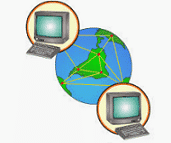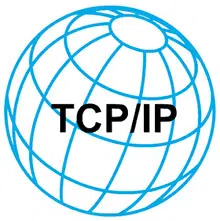 The set of norms and rules that serve to guide a process or action is called a protocol . In the field of computing , the term refers to the guidelines used to establish a communication process between different systems.
The set of norms and rules that serve to guide a process or action is called a protocol . In the field of computing , the term refers to the guidelines used to establish a communication process between different systems.
TCP and IP , meanwhile, are acronyms that refer to two key protocols on the Internet . TCP comes from transmission control protocol , an expression that can be translated as "transmission control protocol" . IP , meanwhile, is Internet protocol or "Internet protocol" .
The idea of the TCP/IP protocol , in this framework, is linked to the family of protocols that constitute the basis of the Internet structure , enabling the transmission of data between multiple computers. These are network protocols : criteria and standards that are responsible for establishing how the components of an interconnection system have to communicate with each other.
The TCP/IP protocol was born in the 1970s , when the United States Department of Defense applied it in a computer network called ARPANET . In 1982 , North American authorities declared it the standard for communications between the nation's military networks.
It is important to keep in mind that, according to the open systems interconnection model (called the OSI model ), there are different levels or layers in network protocols, from the physical layer to the application layer . While IP works at the network level (determining routing and addressing), TCP works at the transport level. It can be said, in short, that TCP is the intermediate level between IP and the application layer ( FTP , HTTP , etc.).
Nowadays, almost all devices are connected to some network and generally use the TCP/IP protocol: from mobile phones to computers, through various household appliances, the Internet allows us all to communicate with remote servers via through a large information network.
As discussed in a previous paragraph, the TCP/IP protocol is a model for network communication that is based on OSI , a theory of layers of which TCP/IP uses four . However, the latter has a greater number of options, without forgetting that it is used in practice.
The ordered group of protocols that are organized by layers is called a stack . Understanding the main features of this concept is the basis of professional training for working with networks in general since it allows us to configure them.
 One of the reasons why the TCP/IP protocol is used in so many areas is that it offers us reliable transmission of the data that travels through the network. This is achieved precisely thanks to the definition of each step to follow from the moment the data is sent (organized in small packets ) until its reception on the destination device.
One of the reasons why the TCP/IP protocol is used in so many areas is that it offers us reliable transmission of the data that travels through the network. This is achieved precisely thanks to the definition of each step to follow from the moment the data is sent (organized in small packets ) until its reception on the destination device.
It is in this aspect that the layers are so necessary to maintain order and security, precisely because this system allows them to only communicate with those who are "below them" to request services and those who are "above them." » to send them the results.
Some advantages of the TCP/IP protocol:
* can work on many devices with different features with various operating systems;
* Suitable for large and medium-sized, professional and home networks;
* supports analysis and monitoring tools;
* It is widely used, and that indirectly increases its compatibility with pre-existing networks.
Some disadvantages of the TCP/IP protocol:
* there is no clear distinction between services, protocols and interfaces, making it difficult to develop technologies based on it;
* if the traffic volume is low, the speed may be unsatisfactory;
* Its performance is not very good on print or file servers.
